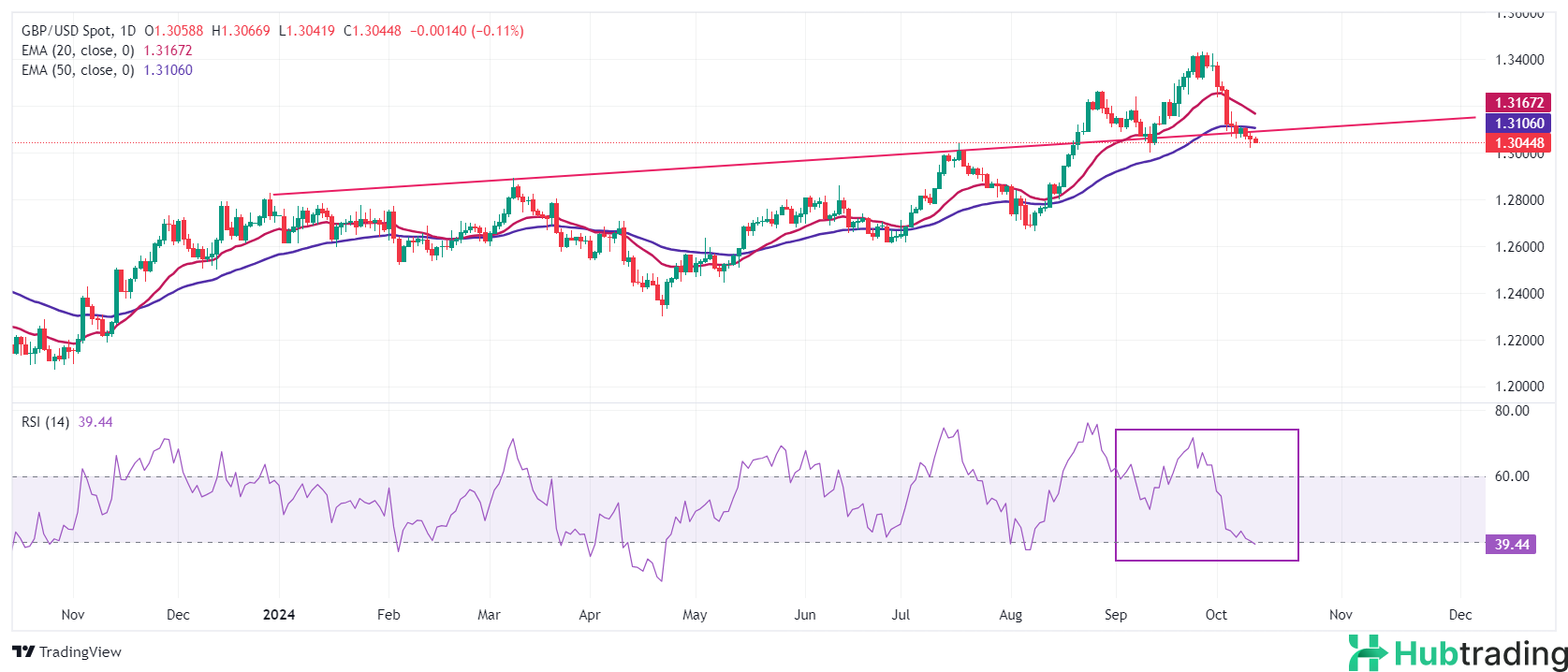- The Pound Sterling makes a strong recovery against its major peers after the UK Office for National Statistics (ONS) reported solid factory data and projected GDP growth for August.
- Traders anticipate that the Bank of England (BoE) may lower interest rates in at least one of its two remaining policy meetings this year.
- Investors are looking forward to the US Producer Price Index (PPI) data for new insights into the Federal Reserve's interest rate outlook.
The Pound Sterling (GBP) is outperforming its major peers during Friday's London session following the release of positive economic data from the United Kingdom. The British currency strengthened as monthly factory data exceeded expectations and the Gross Domestic Product (GDP) showed expected growth in August.
The Office for National Statistics (ONS) reported a 0.2% growth in the economy, aligning with forecasts after July's stagnation. Manufacturing and Industrial Production saw robust month-on-month increases of 1.1% and 0.5%, respectively, both surpassing the anticipated growth of 0.2%.
On an annual basis, Manufacturing and Industrial Production contracted by 0.3% and 1.6%, respectively, but the decline was less severe than in July.
The positive monthly factory data and anticipated GDP growth have enhanced the UK economic outlook, potentially allowing the Bank of England (BoE) to pursue a gradual policy-easing approach.
Looking ahead, key indicators for the Pound Sterling will be the UK Employment data for the three months ending in August and the Consumer Price Index (CPI) report for September, set to be released on Tuesday and Wednesday, respectively. These economic releases will significantly impact market expectations regarding the BoE's potential interest rate decisions in November. Financial market participants anticipate that the BoE may reduce interest rates only once during the remaining two policy meetings this year.
Daily Digest Market Movers: Pound Sterling Rises Ahead of US PPI
- The Pound Sterling has gained against the US Dollar (USD) on Friday, with the GBP/USD pair climbing to near 1.3080. However, the outlook remains cautious as the Greenback holds firm. The US Dollar Index (DXY), which tracks the dollar's value against six major currencies, remains near 103.00.
- The US Dollar retains its strength as hotter-than-expected Consumer Price Index (CPI) data for September diminishes expectations for a 50 basis point interest rate cut by the Federal Reserve (Fed) in November.
- Thursday's CPI report revealed that annual core inflation—excluding volatile food and energy prices—rose to 3.3%. The headline inflation increased by 2.4%, slightly above the forecast of 2.3%, but lower than August's figure of 2.5%.
- Nonetheless, traders remain confident that the Fed will gradually cut interest rates next month by 25 basis points, according to the CME FedWatch tool. A majority of Fed policymakers also support further rate cuts.
- On Thursday, New York Fed Bank President John Williams stated, "Based on my current forecast for the economy, I expect that it will be appropriate to continue the process of moving the stance of monetary policy to a more neutral setting over time."
- Looking ahead, investors will focus on the US Producer Price Index (PPI) data for September, scheduled for release at 12:30 GMT. The annual headline PPI is expected to decelerate to 1.6% from 1.7% in August, while the core PPI—excluding volatile food and energy prices—is anticipated to accelerate to 2.7% from 2.4% in August.
Technical Analysis: Pound Sterling Remains Below Upward-Sloping Trendline

The Pound Sterling is recovering from a monthly low of 1.3010 against the US Dollar. However, the outlook for the GBP/USD pair remains vulnerable as it stabilizes below the upward-sloping trendline drawn from the December 28, 2023 high of 1.2827.
The near-term trend for the Cable has turned bearish, trading below the 20- and 50-day Exponential Moving Averages (EMAs), currently positioned around 1.3167 and 1.3106, respectively.
The 14-day Relative Strength Index (RSI) has declined to near 40.00, suggesting that further downside could occur if the momentum oscillator falls below this level.
On the upside, resistance levels are seen at the psychological barrier of 1.3100 and the 20-day EMA around 1.3170, which will serve as significant hurdles for Pound Sterling bulls. Conversely, support for the Pound Sterling can be found near the key psychological level of 1.3000.





